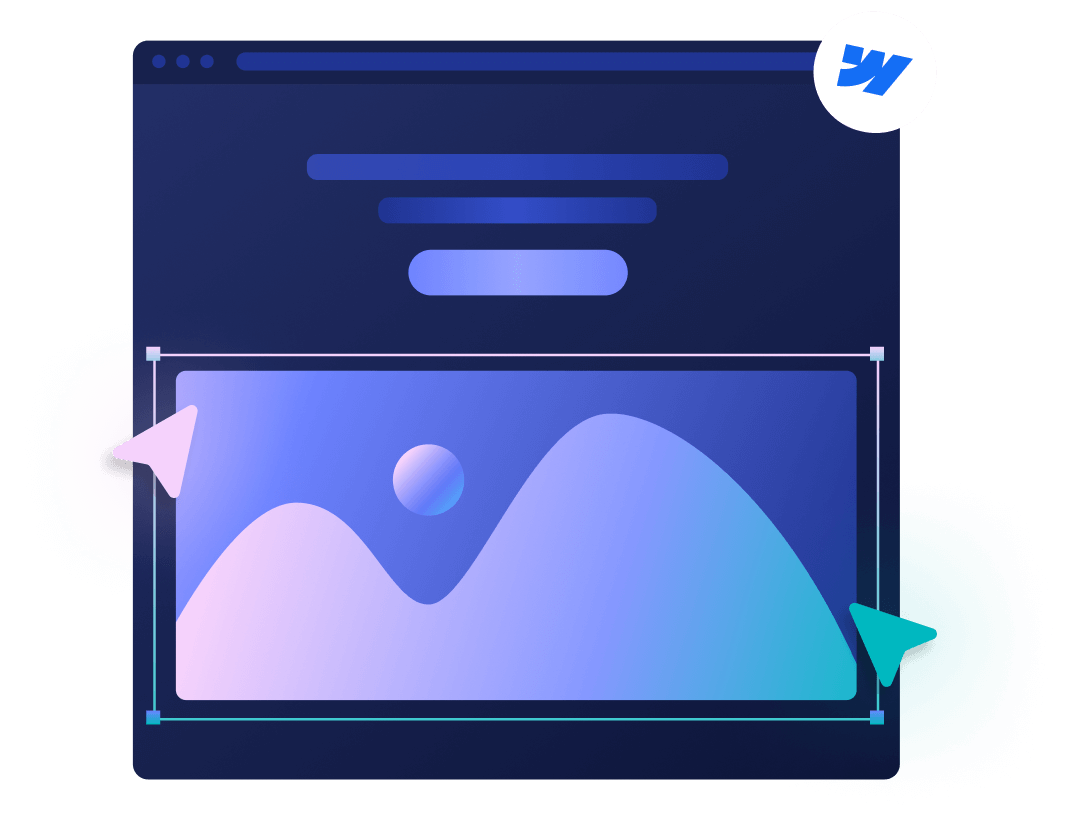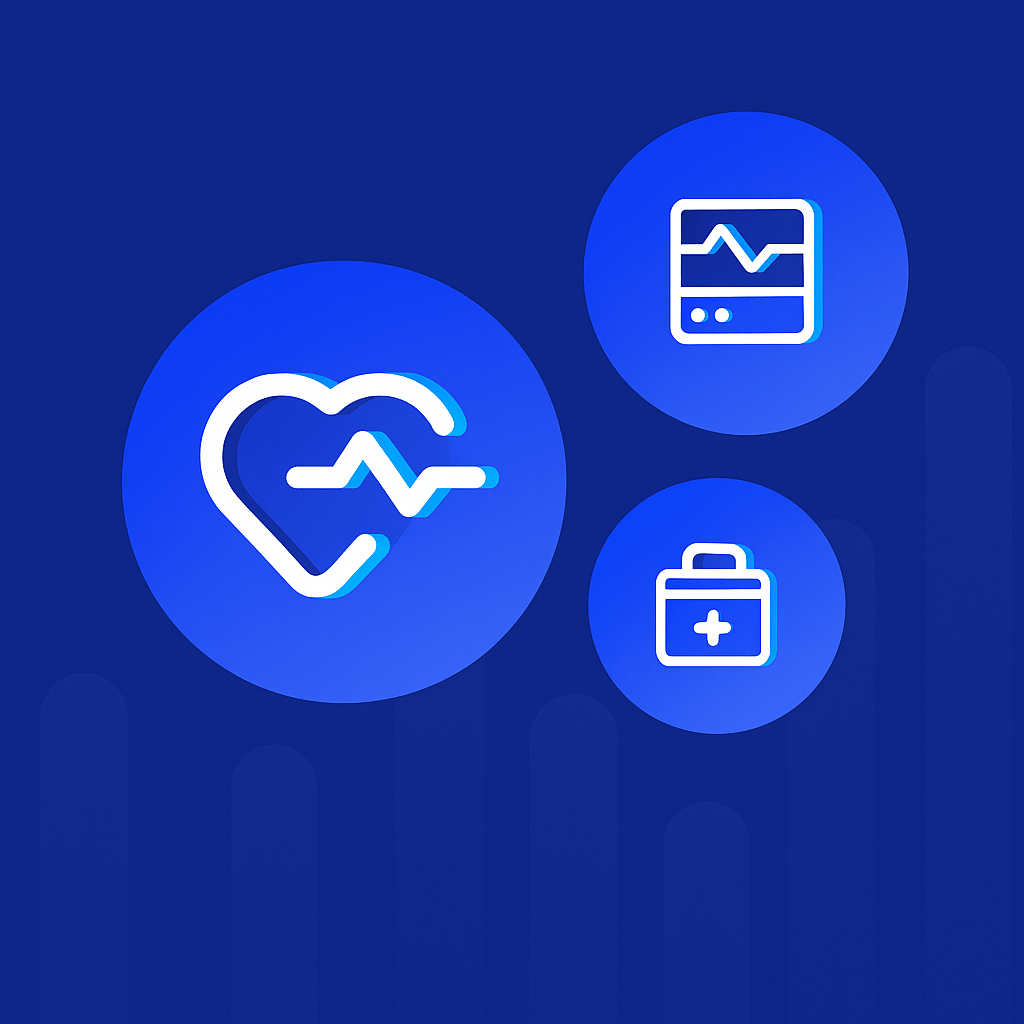
10 Leading Webflow Agencies Specializing in Healthcare Design
Key takeaways
- Choosing a Webflow agency for healthcare requires expertise in compliance, accessibility, and conversion-focused design.
- The best agencies offer proven healthcare outcomes, including increased lead generation, user engagement, and SEO visibility.
- Compliance with WCAG 2.1 AA standards and data privacy protocols is non-negotiable for healthcare marketing sites.
- Agencies with scalable, modular systems support fast-growing healthcare brands without requiring frequent rebuilds.
- SEO and CRO are crucial for healthcare websites to drive qualified traffic and maximize lead conversion.
- Flow Ninja and other top agencies combine strategic thinking with performance-focused Webflow builds tailored to healthcare needs.
Healthcare organizations face unique challenges in building digital experiences that balance brand trust, regulatory awareness, and conversion effectiveness. The right Webflow agency can transform complex healthcare requirements into streamlined, high-performing marketing websites that drive measurable business results.
This guide examines top agencies with proven expertise in healthcare-specific design, helping you identify the perfect partner for your digital transformation needs.
How we selected and ranked agencies
Choosing the right Webflow agency for healthcare design involves evaluating capabilities beyond standard web development skills. Healthcare marketing websites operate in a competitive environment where brand trust, user experience, and accessibility are critical factors that can significantly impact an organization's digital presence.
Our ranking methodology prioritizes agencies demonstrating concrete healthcare proof through documented outcomes and successful project implementations. In 2025, HealthTech growth will stem from integrating marketing moves with compliant, fast Webflow builds that prove outcomes and enhance conversion.
The complexity of healthcare digital ecosystems demands specialized expertise. Healthcare organizations manage various digital products, including marketing sites, product pages, B2B SaaS platforms, and service-specific microsites, all of which require seamless integration and consistent user experiences.
Performance metrics are crucial in our evaluation process. Healthcare marketing websites must load quickly, rank well in search results, and convert visitors into leads effectively. Agencies with strong SEO capabilities and proven conversion rate optimization results receive higher rankings, as these directly impact lead generation and business growth.
Scalability is another critical factor. Healthcare organizations often experience rapid growth or need to adapt quickly to changing market conditions and user needs. The featured agencies excel at building modular, scalable systems that evolve with organizational requirements without necessitating complete rebuilds.
Healthcare proof and outcomes
Healthcare proof extends beyond having healthcare clients in a portfolio. The most qualified agencies understand healthcare-specific challenges and can document measurable outcomes. Key metrics include:
- Improved user engagement
- Increased lead generation
- Reduced bounce rates
- Enhanced user satisfaction scores
The digital health market is projected to generate $171.90 billion, with an annual growth rate of 8.49%, reaching $258.30 billion by 2029. Agencies that grasp this growth and position clients to capture market opportunities demonstrate superior strategic thinking.
Successful healthcare agencies track essential performance indicators, including lead acquisition costs and conversion rates from website visitors to qualified leads. The best agencies provide detailed case studies showing improvements in key metrics and understand the importance of transparent communication of results.
Compliance and accessibility rigor
Healthcare marketing websites must navigate complex regulatory landscapes, including industry-specific guidelines and accessibility standards. Designing for accessibility is mandatory, with healthcare organizations prioritizing interfaces that meet WCAG 2.1 AA standards.
Compliance involves integrating considerations into every aspect of design and development, from initial wireframing through ongoing maintenance. Agencies must implement proper data handling procedures, secure form submissions, and privacy-focused analytics tracking.
Data security is a top priority for healthcare organizations, and leading agencies demonstrate expertise in secure hosting environments, encrypted data transmission, and privacy-compliant user tracking.
Accessibility goes beyond compliance to ensure usability for users with diverse needs. This includes designing for various devices, internet speeds, and user comfort levels.
Performance, SEO, and CRO results
Healthcare marketing websites are critical touchpoints where users make important decisions about products and services. Performance optimization directly impacts user experience and conversion rates. Studies indicate that 72% of users prefer videos over text-heavy content, emphasizing the need for optimized media delivery and fast-loading interactive elements.
SEO for healthcare requires specialized knowledge of medical terminology, industry-specific factors, and content strategies that build authority while remaining accessible. The best agencies balance technical SEO with user-friendly language and navigation.
CRO in healthcare involves understanding user decision-making processes and removing barriers to important actions. Effective CRO strategies focus on building trust through clear information architecture, prominent trust signals, and streamlined lead generation processes.
Successful agencies show measurable improvements in conversion metrics, such as increased form completions, higher lead generation rates, and improved user engagement.
Scale, systems, and integrations
Healthcare organizations need websites that integrate seamlessly with existing systems while supporting future growth and technological changes. Key requirements include CRM integration and lead management systems.
To maintain consistent experiences, many teams adopt modular design systems for efficient updates and expansions. The best agencies build with scalability in mind, creating component libraries and design systems that support rapid feature deployment.
System integration expertise is vital for connecting marketing websites with internal tools and analytics systems. Leading agencies understand the technical requirements for secure API connections.
Scalable architecture also supports diverse content needs, from product information to industry updates. The most qualified agencies build content management systems that empower internal teams while maintaining design consistency.
Process, QA, and ongoing support
Healthcare marketing websites require rigorous quality assurance processes that extend beyond standard testing. This includes accessibility testing, security assessments, and user experience validation.
The design and development process typically involves multiple stakeholders, including marketing teams, product managers, compliance officers, and IT departments. The most effective agencies have established workflows to accommodate complex approval processes.
Quality assurance processes must validate accessibility features across varying devices and user scenarios. Ongoing support is critical for managing regulatory changes, security updates, and evolving user needs. The best agencies provide comprehensive maintenance plans, including regular security monitoring and performance optimization.
1. Flow Ninja
Why it stands out
Flow Ninja combines conversion rate optimization expertise with healthcare-specific design understanding, creating marketing websites that meet compliance requirements while driving business growth. Their approach empowers brands by enhancing lead generation and site management.
The agency emphasizes customizability and scalability, allowing healthcare organizations to adapt their digital presence as services expand. Flow Ninja's focus on performance optimization ensures quick-loading websites that provide smooth user experiences across all devices.
Healthcare proof
Flow Ninja's healthcare projects demonstrate measurable outcomes, including improved lead acquisition and engagement. Recent implementations achieved significant increases in organic search visibility, translating into more qualified inquiries and conversions.
Best for
Flow Ninja excels with healthcare organizations prioritizing growth and conversion optimization alongside compliance. Ideal clients include healthcare product companies, B2B SaaS platforms, and marketplace solutions aiming to enhance digital lead acquisition strategies.
Healthcare startups benefit from Flow Ninja's scalable web design approach, accommodating rapid service expansions without compromising user experience.
Some of the worthy mentions include: Nursa, Eucalyptus
2. Amply
Why it stands out
Amply leads in healthcare web design by blending cutting-edge technology with user-centered principles. Their expertise extends to CMS development and SEO-friendly coding that ensures compliance while enhancing website performance.
Amply focuses on meaningful connections between brands and users through thoughtful interface design and strategic content presentation, improving communication and user education.
Healthcare proof
Amply's diverse healthcare portfolio showcases successful projects that demonstrate measurable improvements in user engagement and lead generation rates.
3. Flowout
Why it stands out
Flowout prioritizes aesthetic excellence and functional effectiveness in healthcare web design. They stay ahead of industry developments by incorporating features like interactive educational tools and streamlined lead capture systems.
Their expertise extends to understanding the nuances of different healthcare sectors, allowing them to adapt designs to meet specific communication needs.
Healthcare proof
Flowout's projects show tangible results, including a 250% increase in online inquiries following a redesign, reflecting their understanding of how design influences business outcomes.
4. Creative Corner
Why it stands out
Creative Corner blends creative excellence with technical precision, creating custom, ADA-compliant sites that exceed accessibility requirements. Their consultative approach tailors solutions to address specific healthcare challenges while supporting broader organizational goals.
Healthcare proof
Creative Corner's portfolio showcases success across healthcare sectors, demonstrating effective integration of compliance and conversion optimization strategies that enhance user connections.
5. Finsweet
Why it stands out
Finsweet focuses on user experience and interaction in healthcare web design. Their designs accommodate users' varying technical comfort levels, ensuring efficient access to information and services.
Healthcare proof
Finsweet's projects demonstrate measurable improvements in user engagement and organizational efficiency, emphasizing data-driven optimization for continuous improvement.
6. Refokus
Why it stands out
Refokus emphasizes user feedback integration and iterative improvement, ensuring healthcare websites evolve to meet changing user needs. Their collaborative approach addresses real operational needs while supporting broader organizational objectives.
Healthcare proof
Refokus's projects achieve positive outcomes in key performance areas, demonstrating comprehensive attention to security alongside user experience optimization.
7. SVZ
Why it stands out
SVZ emphasizes user engagement and satisfaction, recognizing that healthcare marketing websites must serve users in various contexts. Their designs facilitate better communication while maintaining trust and professionalism.
8. Edgar Allan
Why it stands out
Edgar Allan focuses on user-centric design, ensuring healthcare websites accommodate diverse user needs and circumstances. Their approach considers user literacy, context, and technical comfort.
Healthcare proof
Edgar Allan consistently demonstrates excellence in both technical implementation and strategic thinking, supporting organizations' goals for user engagement and business growth.
9. Deduxer
Why it stands out
Deduxer enhances user experience through innovative methodologies, recognizing that healthcare marketing websites serve as critical touchpoints for information and lead generation.
10. Juice
Why it stands out
Juice integrates technology and design to create exceptional user-centered solutions, ensuring websites facilitate the entire user journey from research to conversion.
How to choose the right partner
Selecting a web design agency for healthcare requires careful evaluation of capabilities beyond standard web development skills. Organizations must prioritize agencies that demonstrate a deep understanding of compliance requirements, accessibility standards, and the unique challenges of healthcare digital communications.
Aligning with agency expertise on compliance and data handling is crucial. The best agencies build compliance considerations into every aspect of design and development, from planning to ongoing maintenance.
Validating agency accessibility standards and quality assurance processes is essential. Healthcare websites must serve all users effectively, and the best agencies show a comprehensive understanding of WCAG guidelines through robust testing procedures.
Understanding service level agreements (SLAs) and exploring pilot engagements provide insights into an agency's working style and commitment to client success.
Align on compliance scope and data boundaries
Establishing clear boundaries around the types of information a website will handle is critical for compliance. Agencies must understand the difference between general health information and sensitive data to ensure proper data handling.
Compliance issues can arise from improper form configurations or analytics tracking that violates privacy standards. The most qualified agencies anticipate challenges and implement preventive measures.
Effective compliance discussions should cover data handling procedures, staff training, and ongoing monitoring protocols, ensuring partners provide comprehensive guidance throughout the website's lifecycle.
Validate accessibility and QA process
Evaluating an agency's accessibility compliance requires examining their track record and approach to WCAG 2.1 AA guidelines. The best agencies provide detailed documentation of their testing methodologies and can demonstrate how they validate accessibility features.
Ongoing QA considerations include regular accessibility audits and performance monitoring to ensure websites effectively serve all users as content and functionality evolve.
Pilot engagement and SLAs
Pilot engagements allow organizations and agencies to evaluate working relationships before committing to full-scale projects. SLAs should define response times, availability for urgent updates, and procedures for handling compliance issues.
Key components of effective SLAs include maintenance schedules and escalation processes for critical issues. Clear expectations in the agency-client relationship should encompass communication protocols and regulatory update procedures.
Frequently asked questions
Can I use Webflow for sensitive healthcare workflows?
Webflow can be used for healthcare marketing websites with proper implementation and working with agencies that understand healthcare compliance. Success requires attention to data handling, form configurations, and third-party integrations to protect sensitive information. However, Webflow is not suitable for workflows involving protected health information (PHI) or direct patient interactions.
What is a realistic timeline and budget for a healthcare site?
Timelines typically range from 3 to 6 months, influenced by complexity factors such as compliance requirements and stakeholder approvals. Budgets start around $10,000 for basic implementations and scale significantly based on specific requirements.
How do I evaluate accessibility compliance before signing?
Evaluate an agency's track record and request examples of their implementation of WCAG 2.1 AA standards. Use accessibility evaluation tools on sample websites to assess compliance levels and request information about ongoing monitoring procedures.
What is the safest way to migrate from WordPress to Webflow?
Safe migration involves thorough documentation of existing functionality and careful preservation of compliance features. Working with specialized agencies ensures proper handling of compliance considerations throughout the transition process.






.svg)






-min.png)



.png)









.svg)

.png)
.png)
.webp)
.svg)

